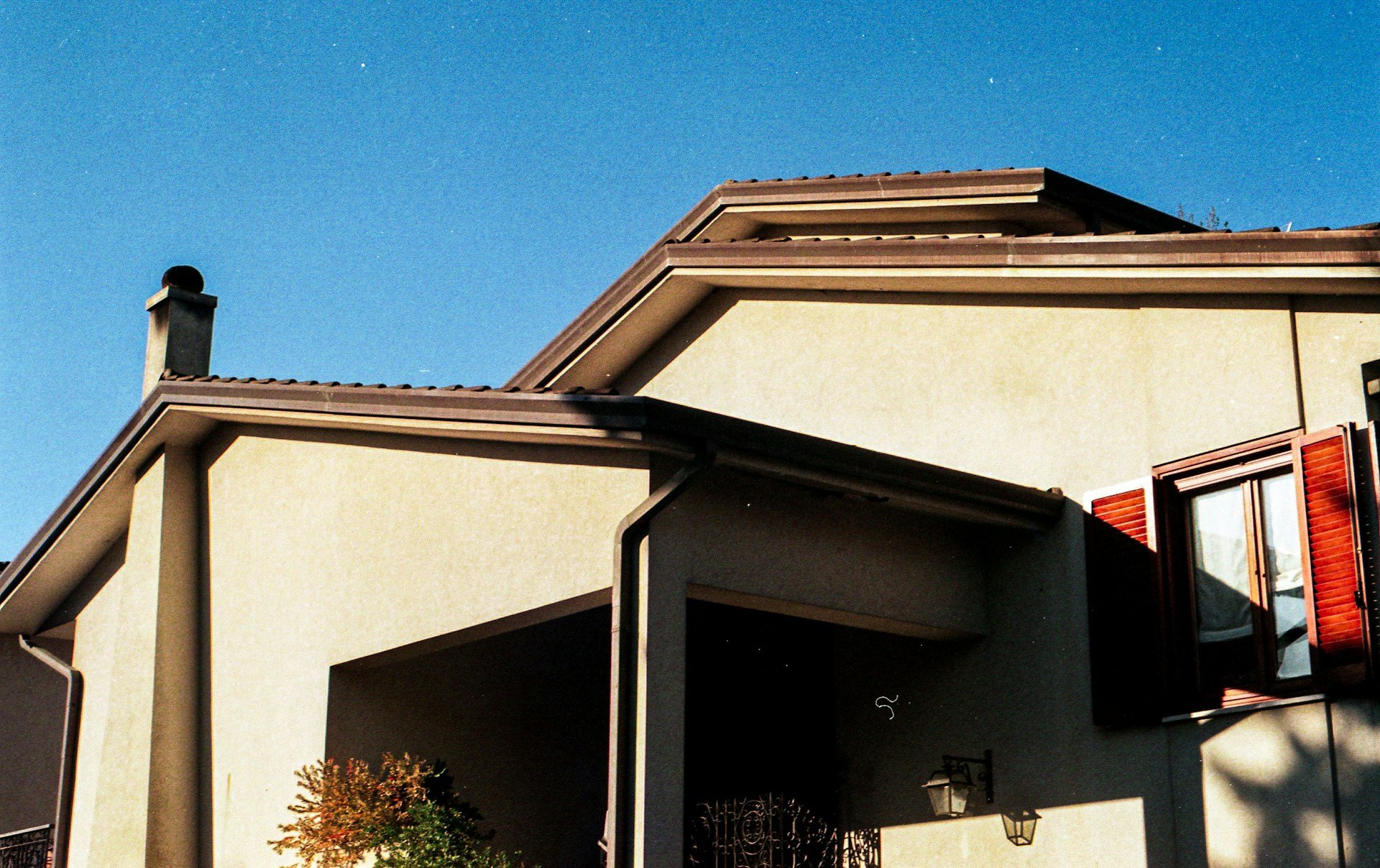
In the oh-so-tantalizing realm of gutter installation, the choice of your fasteners holds significant importance in ensuring the effectiveness of your gutter system. Among the different options available to you, gutter spikes have always been a conventional choice, seemingly offering a straightforward solution for securing gutters to your home.
However, at RoofCrafters, we think you should know that this seemingly simple method harbors many risks and drawbacks that can compromise the integrity of your entire gutter system. From potential damage to the structure of your home to maintenance challenges, gutter spikes present a range of issues that warrant a critical reconsideration of their use. Yikes, right?
We get it, no homeowner really sits and thinks about their gutters. That’d be pretty boring. So, allow us to break it down for you, so you can spend your time thinking about more fun things, like baseball season, or what’s for dinner tonight! Let’s start by defining what gutter spikes are, why they’re not an ideal option, and why opting for hangers as your fastener is the better choice!
What Are Gutter Spikes?
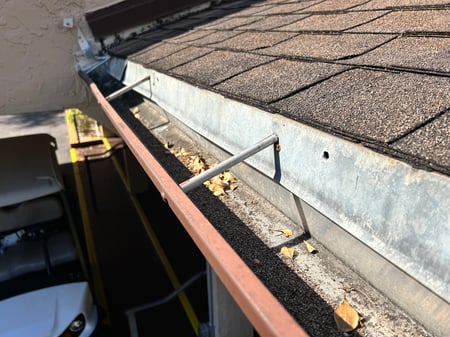
Installing gutter spikes involves driving 8-10" nails through the gutter and into the home. However, it harbors a significant design flaw. The main problem with these spikes is their tendency to dislodge from the wood when the gutters become laden with debris. Whether it's leaves accumulating in the fall or roof granules gathering over time, the weight exerted on the spikes places strain on their connection to the wood.
This continual pressure causes the nails to gradually loosen, ultimately leading to the failure of the entire gutter system. Eventually, the gutter detaches entirely from the house. What worsens the issue is that once the spikes pull out, they cannot be securely reinstalled into the original holes. Regrettably, gutters with these spikes are still prevalent.
Why Are Gutter Spikes Not Ideal?
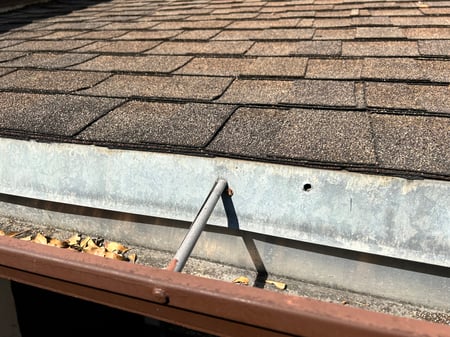
Gutters installed using spikes, also known as "spike and ferrule," are not ideal for several reasons. Here are the top 4:
Weak fastening: The spikes are simply nails driven through the gutter and into the wood of the home. This fastening method lacks strength and stability compared to other gutter installation techniques.
Vulnerability to weight: When gutters accumulate debris such as leaves, twigs, or roof granules, they become heavy. The constant weight puts pressure on the spikes, causing them to gradually pull out from the wood over time.
Risk of failure: As the spikes loosen, the gutter system becomes increasingly unstable. Eventually, the gutter may detach entirely from the home, leading to potential property damage and safety hazards.
Inability to reinstall: Once the spikes have pulled out, they cannot be securely reinstalled into the same holes. This means that even attempts to repair the gutter system may prove ineffective.
Overall, spiked gutters are prone to failure and do not provide reliable long-term performance compared to modern gutter installation methods that offer stronger and more durable attachment mechanisms.
Why Are Gutter Spikes Not Ideal for Roofers to Install?
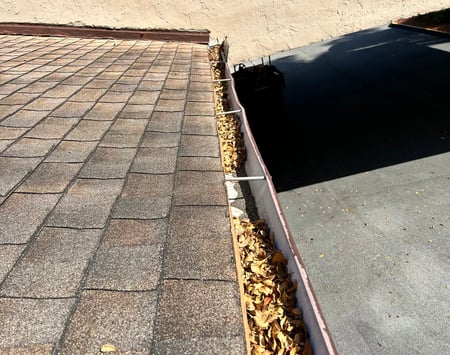
Homeowners aren’t the only ones that don’t prefer this method! Gutter spikes also pose significant challenges for roofers who install them due to various factors:
Cannot be removed from drip edge: Gutter spikes are typically driven through the gutter and into the wood of the home, making them nearly impossible to remove from the drip edge without causing damage.
Requirement for drip edge replacement: In accordance with Florida building codes, removing gutter spikes often necessitates the replacement of the drip edge. This adds time and expense to the roofing project.
Difficulty in removal: Removing gutters installed with spikes can be a labor-intensive process for roofers. The spikes are often firmly embedded in the wood, making extraction difficult and potentially damaging to the gutter system and surrounding structure.
Hang under drip edge: Gutter spikes are typically installed beneath the drip edge, which can compromise the effectiveness of the gutter system and lead to water damage issues over time.
Sacrificing future warranty: Utilizing gutter spikes may void or compromise the warranty on the gutter system. Roofers may face challenges in ensuring the long-term performance and durability of the gutters, potentially resulting in warranty issues.
All in all, gutter spikes present significant drawbacks for roofers, including difficulties in removal, potential damage to the drip edge, and the risk of voiding warranties. Opting for alternative gutter installation methods, such as hangers, can provide a more effective and reliable solution for roofing professionals.
Should I Opt for Gutter Hangers Over Spikes?
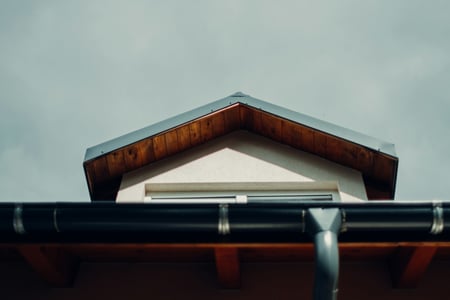
Opting for gutter hangers over spikes offers several advantages, let’s review them:
Increased stability: Gutter hangers provide a more stable and secure attachment for the gutter system compared to spikes. They are designed to hold the gutter in place more effectively, even under the weight of debris or during adverse weather conditions.
Better support: Hangers are specifically designed to support the entire length of the gutter, distributing weight evenly along the gutter's length. This reduces the risk of sagging or pulling away from the house, which is common with spiked gutters.
Reduced risk of damage: Because hangers offer better support and stability, they help prevent damage to both the gutter system and the house. By securely holding the gutters in place, hangers minimize the likelihood of gutter failure, which can lead to costly repairs or property damage.
Ease of maintenance: Unlike spikes, which can become loose and difficult to reinstall, gutter hangers are typically easier to maintain. If adjustments or repairs are needed, hangers can be adjusted or replaced more easily and securely.
Longer lifespan: Gutter hangers are often made from durable materials such as aluminum or stainless steel, which are resistant to corrosion and wear. This means that gutters installed with hangers tend to have a longer lifespan and require less frequent replacement or maintenance compared to spiked gutters.
Ease of removal and installation: Gutter hangers offer roofers and homeowners alike a convenient and hassle-free solution for gutter installation and maintenance. Unlike gutter spikes, which can be difficult to remove and may cause damage to the roof and gutter system, hangers are designed for easy installation and removal.
Understanding Why Gutter Spikes Are a Risky Choice
So, to be frank, opting for gutter spikes as a method of gutter installation poses significant risks and drawbacks. From their tendency to loosen and fail over time, leading to potential damage to property and costly repairs, to the challenges they present for roofers during installation and removal, gutter spikes fall short compared to modern alternatives like gutter hangers.
By understanding the limitations and risks associated with gutter spikes, homeowners and roofing professionals can make informed decisions to safeguard their homes and the properties they offer their services.
All of this being said, I think it’s pretty clear that most roofing contractors are not the biggest fans of gutter spikes as an installation method, and at RoofCrafters specifically, we think you deserve upfront honesty about the services you’re researching. So, if you’re currently looking for a better gutter solution, be sure to hit the “Schedule an Inspection” button down below, and one of our experts will walk you through your options!
My name is David Toth and I am the lead estimator in North Florida with RoofCrafters Roofing. Originally from New Brunswick, I have called Florida home for the past 47 years. I enjoy cooking along with traveling to different historical areas in Florida when I have free time.



